We've independently reviewed this article to make sure it's as accurate as we can make it.
To find out more about our article creation and review process, check out our editorial guidelines.
Wondering how to clean a moldy refrigerator?
Opening your fridge to grab a snack, only to find that it has a musty smell can be super annoying.
Luckily, you’ve come to the right place to get rid of mold.
To clean a moldy or musty fridge, please use warm water, vinegar, and baking soda. You’ll also need to get rid of spoiled food and ensure your snacks are correctly stored.
Keep reading to learn more about how to get rid of mold smell in fridges!
Why trust us? This article was written by Craig Anderson and Andy Fulenchek.
Craig has helped thousands of other homeowners repair their appliances since 2016.
Andy is one of our resident appliance repair experts with over a decade of experience. He currently runs his appliance repair company with a team of trusted technicians.
5 Simple Steps to Clean a Moldy / Musty Fridge
In this section, I’ll guide you through all the steps you must follow to eliminate mold in your refrigerator.
Keep in mind that addressing the problem before it becomes severe is crucial. Mold can be quite challenging to remove once it permeates the fridge’s insultation.
Mold can also cause allergic reactions. Symptoms of mold exposure include itchy eyes, rash, coughing, or nasal congestion.
#1 Remove All Food From Your Fridge
To clean mold out of your fridge, you first need to remove all the food containers.
Please check if the food is spoiled to make the cleaning process much easier.
You’ll know your food is spoiled if it has an unnatural color, funny texture, bad odor, rising air bubbles, foam, or mold spots (white, green, blue, or black).
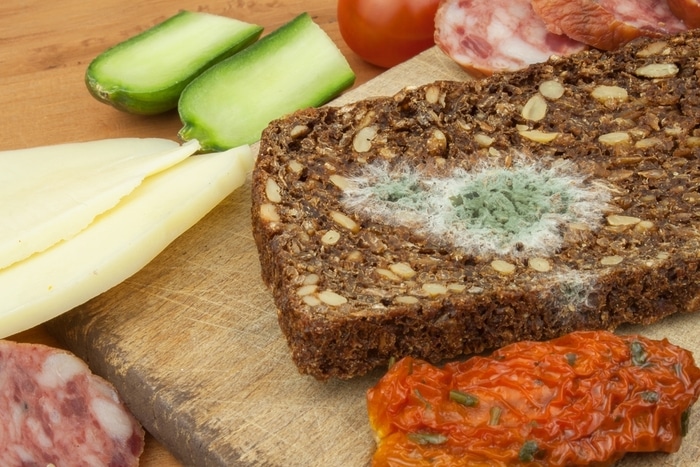
If you’re unsure if your food is spoiled, I recommend throwing it away. You know what they say…better safe than sorry.
Bear in mind that spoiled food holds bacteria that could be dangerous for your health, which is why my usual advice is to pack any spoiled items in thick garbage bags, separated from other trash items.
Tip: You can transfer the highly perishable food to a cooler while cleaning your fridge.
#2 Remove the Shelves
The next step in the cleaning process is to remove the shelves from your moldy fridge.
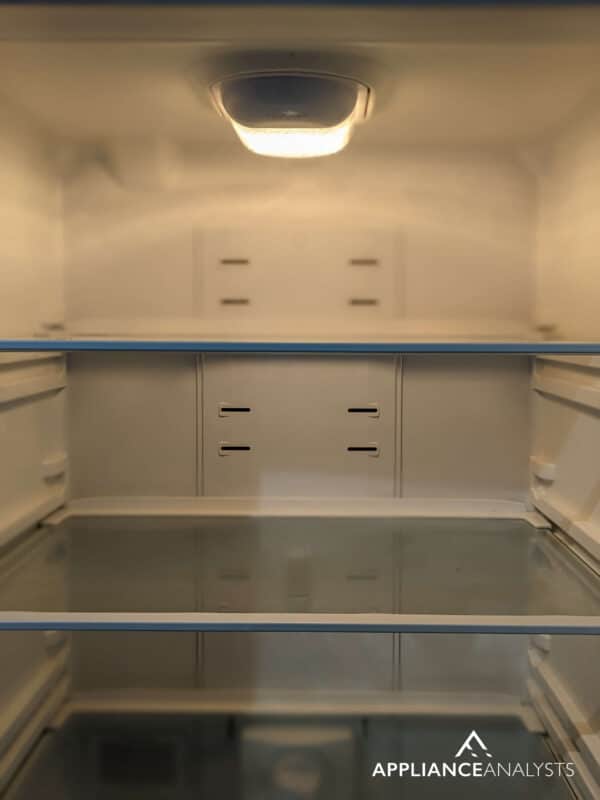
I’ve seen that most fridges have a tab you can push to remove the shelves. But I recommend checking your manual for detailed instructions, as the process can vary depending on the brand and model you own.
#3 Prepare the Cleaning Solution
To clean your moldy and musty fridge, you can use different cleaning products available in the supermarket. However, I prefer a natural option.
By preparing your cleaning solution, you’ll prevent a chemical smell and keep your family safe.
Mix equal parts of warm water and white vinegar in a spray bottle to clean mold in refrigerators.
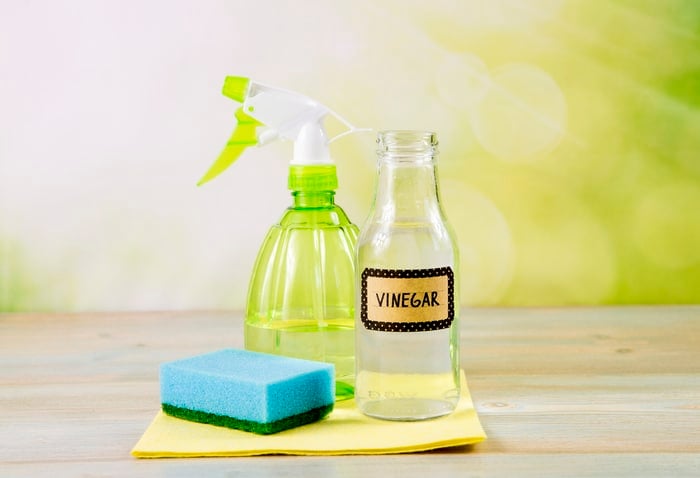
Vinegar is a great cleaner because of its acidity. It can easily break down grease and grime and remove stubborn stains. It also has antifungal and antibacterial properties, which is great if you want to clean a moldy/musty fridge.
You should never mix vinegar with bleach, as it creates toxic gases that can be harmful to your health.
#4 Clean Your Fridge
The next step in the cleaning process is to wipe the interior compartments of your moldy and musty fridge.
My go-to recommendation is to use a soft sponge or cloth. However, if there are any stubborn stains, please use a soft brush.
Don’t forget to clean the water and ice dispenser to eliminate the musty smell. It can be easier to clean the faucet with a cotton swab.
You should also clean the door seals thoroughly since mold can easily grow in them. You can use a cotton swab or a soft toothbrush.
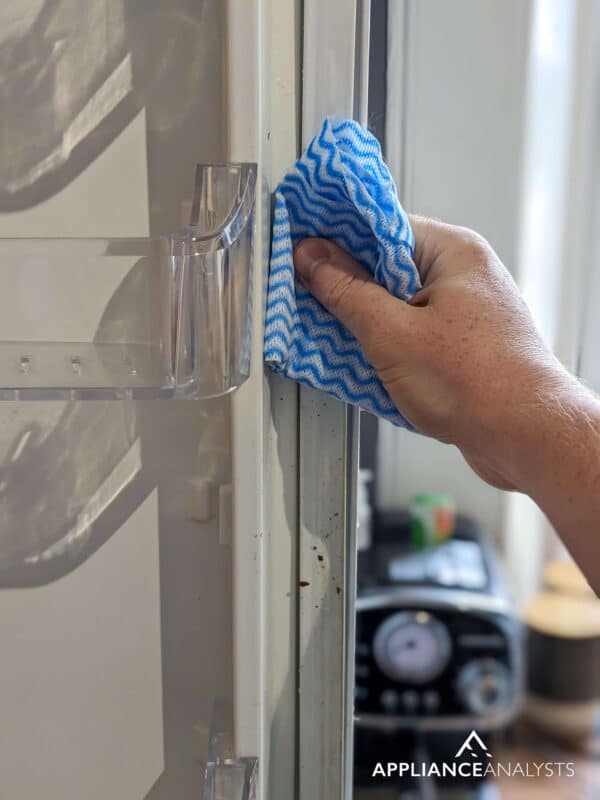
Then, rinse with water and use paper towels or a clean cloth to dry every surface to prevent mold from growing again.
Throw away any paper towels you used to clean the mold.
#5 Use Baking Soda or A Newspaper
Once you’ve cleaned the mold from your fridge, please re-stock the unit and store a bowl filled with baking soda. You can also use crumpled-up newspaper.
Baking soda neutralizes odors, while crumpled newspaper absorbs them, making the combination effective for eliminating any lingering mold smell in your fridge.
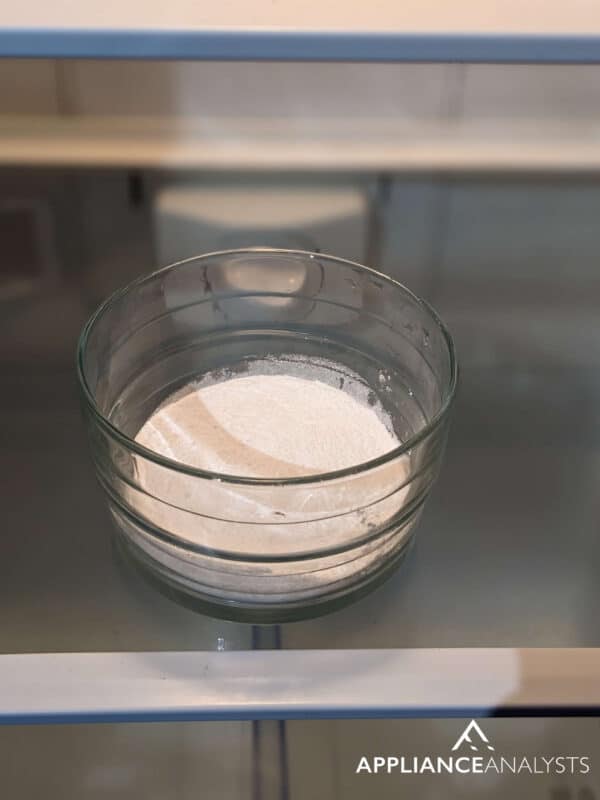
Tip: If the musty smell persists, replace the old newspapers with fresh ones and repeat the process. You can also use charcoal briskets to neutralize and absorb odors.
FAQs About a Moldy/Musty Fridge
Now that you know how to clean mold from your refrigerator, it’s time to address some of the most commonly asked questions.
Why Is Mold Growing In My Refrigerator?
Mold usually grows in moist environments with poor air circulation. However, I’ve seen that spoiled food is one of the most common reasons mold grows in a fridge.
You see, mold can easily transfer from your food to other surfaces and cause a musty smell and other issues.
It’s also crucial to regularly check your fridge’s ice maker or water dispenser because if they are damaged, you could have a leak. If you don’t notice the leak, mold can easily grow.
In my experience, keeping a fridge in a garage can also lead to mold growth.
You see, storing a fridge in a garage can affect its internal temperature, especially in regions with extreme weather conditions. If the excess moisture trapped in your fridge doesn’t evaporate, mold can easily grow. Try keeping your refrigerator out of the garage or any heat source.
It’s crucial to ensure proper air ventilation, maintain the right temperature, and fix any performance issues promptly to prevent mold. Click here to check out our fridge’s maintenance guide!
How to Store Food in My Fridge So It Lasts Longer?
Follow this quick guide to store food in your fridge correctly so that it can last longer:
- Top shelf: Store all the ready-to-eat food, such as leftovers and drinks. Don’t refrigerate food in cans, and store all leftovers within two hours of cooking.
- Middle shelves: These shelves have the correct temperature to keep food prone to spoiling fresh, such as dairy products, cooked meats, eggs, etc.
- Lowest shelf: It is the coldest shelf, so I suggest putting in raw meat and fish. Make sure you keep your food in its store wrapping to avoid cross-contamination.
- Drawer: They are ideal for storing vegetables and fruits. Ensure fruits are stored separately since they produce different gases that can cause other similar products to spoil. I also recommend keeping fruit and vegetables in perforated plastic bags and avoiding washing them before refrigerating.
- Door: You can store condiments and spreads, such as sauces, dressings, or pickles, since these products have natural preservatives. Don’t store dairy products in the door because it’s the warmest place inside the fridge, and your food will not stay fresh.
Is It Safe to Use a Refrigerator That Had Mold in It?
Yes, it’s safe to use a refrigerator that had mold in it, but only after you have thoroughly cleaned it and all traces of mold have been removed.
As mentioned above, mold can pose health risks if ingested, so following the guide above is crucial to clean your fridge if you notice any signs of mold.
Wrapping Up: Steps to a Mold-Free Refrigerator
Hopefully, now you know how to get rid of mold in fridges.
Remember that you can easily eliminate mold by making your cleaning solution (equal parts of water and vinegar) and spraying it on your fridge’s surfaces, including drawers, shelves, water dispenser, ice maker, freezer, and door seals.
Don’t forget to get rid of spoiled food and store your products correctly so they can stay fresh for a longer period.
Thank you so much for taking the time to read this article. If you ever notice your refrigerator malfunctioning, please check out our site. You’ll find different ways to fix the issue.
Have a wonderful rest of the day!








